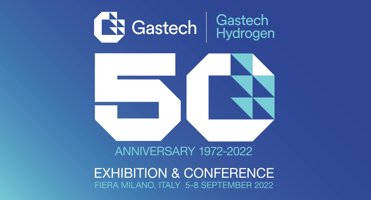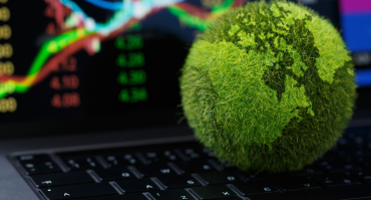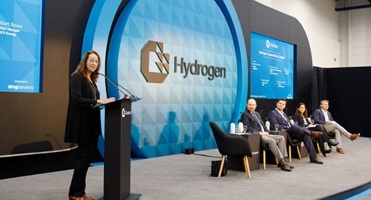In the early days of natural gas markets, such as when the famous Dutch Groningen gas field was discovered, commercializing giant volumes was complex and took time. We are seeing similar complexity in the nascent hydrogen markets. We have interviewed those who stand on the front line of hydrogen deals, the hydrogen commercialization leaders, and share some lessons learned below.
With only 10% of announced mature hydrogen supply projects having signed offtakes so far, players need to take key actions to ensure more deals can get off the ground quickly, given the 2030 decarbonization targets and the time needed to construct and operate projects. With this in mind, our team, using interviews of those who are making hydrogen deals, benchmarking, and our extensive work, has identified key areas for guiding decision-makers involved in large-scale projects—from both the offtaker and supplier side—towards successful commercialization and contracting.
We’ve prepared a set of “Playbook rules”—principles for hydrogen commercialization that client experience has proved are essential for success. Here is an extract of six of those rules:
- Seek out strategic offtakers that have premium ability
Try to target industries and players within which hydrogen holds high strategic value. These sectors demonstrate a strong willingness to pay, due to a combination of substitution value, urgency of their decarbonization imperatives, and willingness to invest in being first movers or fast followers. An example of such deals concerns maritime players and brand-conscious consumers. The latter concerns the ability to pass on costs to certain customers, including the fact that their costs, in the end, represent only a fraction of the end-product cost (e.g., transport for consumer goods, steel for cars). For example, we have seen anchor pricing of hydrogen at $7.60 per kg for transport use, with some companies willing to pay a premium for low-carbon fuel versus its fossil alternatives.
- Pricing models must be flexible
Move away from fixed pricing where appropriate, to embrace adaptable pricing mechanisms, such as tolling indices tied to power indices. These reflect the need for market-based pricing, which in turn will lead to short-term flexible, multi-offtaker contracting with more sophisticated structures. For example, the prevalence of fixed cost & fossil alternatives indexation models is expected to decline from 80% today to less than 50% by 2030 as companies adopt more dynamic pricing models (see visual below). “It was a decreasing fixed-price staircase model during the first five years, then adapted to allow for more flexibility.” - Business developer, Global Refinery, Europe, BCG interview.

Source figure: BCG H2 Playbook 2024.
- Time your contract negotiations allowing to find the right consortium and de-risking levers
Initial hydrogen deals can easily take at least 18 months, unlike fast-moving natural gas deals. Use this time to de-risk. Most are willing to enter this market in partnerships—a combination of multiple de-risking levers and a partnering strategy is essential, uniting the aims of offtakers, logistical and technology partners, developers, and financiers. Market players currently emphasize the importance of having at least two or three levers in place to successfully close contracts—e.g., shared regulatory strategy being one of them, or entering a joint venture. To unpack the latter, as an example, you can enhance project bankability and share risks by forming joint ventures and co-sponsorships. This alignment of goals and expertise is crucial for securing long-term commitments and shares price risk uncertainty—there are parallels with the equity co-investment we saw in the early days of LNG. Prioritize building long-term strategic partnerships with large, reliable offtakers. As markets mature, consider flexible multi-partner models to enhance resilience and adaptability. Consortia mean risk can be shared and closing deals. “We give priority to offtakers that are willing to participate in the project.” - Green H2 developer, MENA.
- Align with regulations & government backing for part of the contract risk
Ensure you stay ahead of regulatory changes and follow key developments—such as Low Carbon H2 certification definition in Europe, or broader developments in Asia, MENA, Australia, and the US. It’s essential your projects comply with international certification standards to access global markets and secure regulatory approval. Moreover, obtain government-backed contracts for difference (CfDs) and other subsidies to reduce financial risks and bolster project viability. Governmental backing remains the most important lever to de-risk contracting, BCG interview. There are $140BN of subsidies and grants around the world available in the next few years to help scale the industry. It is key that players tap into those.
- Leverage scenario thinking through digital tooling as another de-risking lever
Enhance project bankability and understand risks by using software tools for your commercial team, joint venture/consortium partners, and financiers. BCG teams have seen hydrogen leader clients that are really thinking about the amount of risk to take on in their portfolio, and how to build books; even going all the way to modeling returns probabilistically using tailored software tools.
- Embrace project finance
As government subsidies wane in the 2030s, be ready to pivot in pursuit of effective project finance. Making use of a blend of equity, debt, and—where applicable—concessional finance will be required as we can see beyond initial projects, which can no longer be carried just by governments or corporate balance sheets of first movers. This will require having a clear de-risking strategy providing for stable cash flows for 8-10 years—with banks, in turn, willing to be creative in making use of comprehensive insurance and performance guarantees, and taking some commercial risks on years not covered by government backing. Deals like H2 Green Steel show the way in this. A simple takeaway is to involve banks early on in the project to get their support and build the financing strategy together with them. “Equity story for financiers is equally useful and key for offtakers. Financing and contracting are deeply linked.” - H2 developer, Europe.
So what?
Following these playbook rules will ensure your teams are well placed to take advantage of a rapidly changing marketplace. Despite multiple challenges, the commercialization and development of hydrogen are gaining momentum, and ideally will accelerate to reach global tradability by the 2030s. First movers and fast followers of hydrogen commercialization will be uniquely positioned to seize opportunities and lead this market transformation—but only if they are able to learn from the early deals and hydrogen leaders and take on board the lessons of effective commercialization.
As BCG team, we would love to hear your feedback via LinkedIn, or live at Gastech.
Author: Erik Rakhou
Supporting Authors: Stevan Jovanovic, Javier Doblas.
































